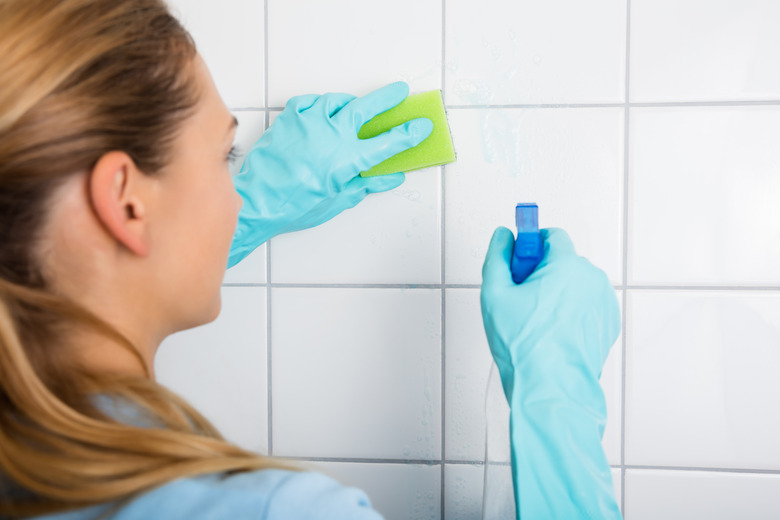What To Use To Clean Tile After Installation
You've worked hard installing new tile, but when you go to admire your handiwork, you notice a haze over the tiles. That grout haze is perfectly normal, but it can be frustrating to clean. The good news is you probably already have some options around the house for cleaning tiles after grouting. It's always best to start with the gentlest technique and work your way up to more harsh cleaners if needed.
Cause of Tile Haze
Cause of Tile Haze
After grouting your tile, you wipe away the excess with a sponge. But sometimes, a little grout gets left behind, which creates a whitish haze. You may not notice it at first, especially while the tile is still wet. After it dries, the haze often reveals itself. You have a few options for cleaning ceramic tile after installation to get rid of the leftover grout. You'll usually get the best results by acting quickly.
Dry Cheesecloth Method
Dry Cheesecloth Method
Haze on freshly installed tiles may be as easy to remove as wiping them with a dry cheesecloth. The sooner after you grout your tile you do this, the more effective this method, but you want to give the grout at least 24 hours to dry first. This method works if the grout haze comes from loose or easily removed grout sitting on the tile surface. Once you loosen the grout with the cloth, you can sweep or vacuum up the remnants to get the floor or counter clean.
Towel Dampened With Water
Towel Dampened With Water
If a dry cheesecloth doesn't do the trick, try dipping it in some plain water and ringing out the excess. You want the cloth damp but not soaking wet. Use a little elbow grease to rub each tile to remove the grout haze. The dampness is sometimes enough to reactivate or wet the grout on top of the tiles so it comes up easily. You can also try a damp sponge to do the job.
Diluted Vinegar Mixture
Diluted Vinegar Mixture
For smooth porcelain or ceramic tiles, vinegar is an option if water isn't enough. But don't use it on any stone, slate or other porous tile material, as the acidity in the vinegar can damage the tiles. To use vinegar on porcelain or ceramic, mix four parts water with one part white vinegar. Wipe the tiles using a soft cloth dipped in the vinegar mixture. You can add more vinegar to make the mixture stronger if needed. Wash the tiles again with plain water to remove any remaining vinegar.
Commercial Grout Haze Remover
Commercial Grout Haze Remover
If you're still dealing with hazy remnants of grout, it may be time to move to a tile haze remover product. Haze from epoxy grout often requires a product designed for that type of grout. Many grout remover products are acidic, which doesn't mix well with natural stone, however. Just like vinegar, acidic cleaners can etch your new tile. Always choose a grout haze remover product designed for the type of tile you have installed.
Always work in a well-ventilated area when using chemical cleaners. Wearing a mask and gloves can provide additional protection. Apply the remover according to the package instructions. You may need to spray or wipe the cleaner onto the tile depending on the product. Follow with a water-only cleaning of the tile surface to remove the cleaner.
The best way to clean newly laid tiles is the method that's least abrasive and still effective, which can vary depending on the type of flooring and how long the grout haze has been on the tiles. Progress through the options as needed to find the solution that makes your tiles fresh and new.
